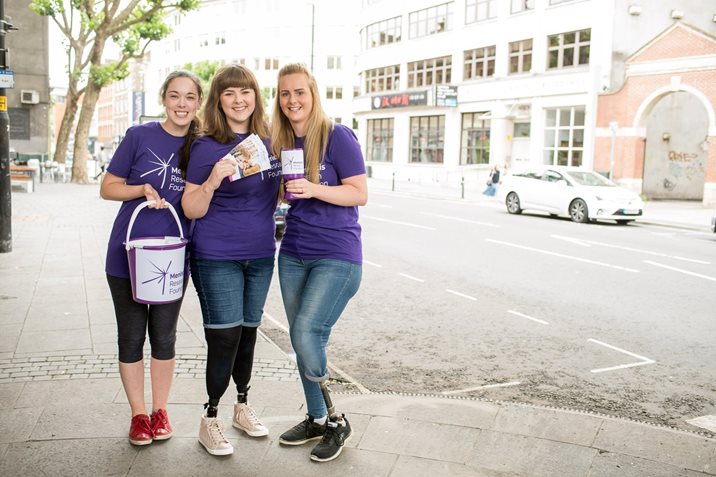Charlotte Hannibal contracted meningitis aged 18, suffering from what she believed at the time was “Freshers’ Flu” during her first week at university. Both of Charlotte’s legs were amputated below the knee and she lost all of the fingers on her left hand. As an Ambassador for MRF, Charlotte has helped to raise awareness throughout the UK, alongside her mother, Dawn.
At this year’s Pushing the Boundaries day, an support day organised by Meningitis Research Foundation for children with limb loss , Charlotte spoke on a panel giving her account of life after meningitis. One audience member asked how she’d managed to learn to drive following the loss of her lower legs. Below, Dawn explains more about Charlotte’s path to driving…
Getting back in the driver seat
For disabled people who want to learn to drive or get back into driving, Motability website is the best place to start. They hold roadshow events which are really informative, and we attended one of these once Charlotte decided she would like to get back to driving. They have cars and loads of adaptations on display, also wheelchairs and lots of representatives from all sorts of companies. Well worth the half a day out.
From the Motability website:
“If you are the customer there are no restrictions to you joining the scheme with a provisional licence, although you will have to meet all other acceptance criteria. Providing you are shown as a Motability permitted driver on the Certificate of Motor Insurance and you are accompanied by your nominated driver who is over 21 and has held their licence for at least three years you can learn to drive in the car.
For all other drivers, certain restrictions do apply regarding provisional licence holders e.g. you must be aged 21 or over, in addition to meeting all other acceptance criteria. For further details of these please contact RSA Motability and check out the Scheme's policies on who can drive your car.”
Making the next step
The next step we took was to make an appointment at our local Driving Assessment Centre. Here they have experts on adaptations and all driving abilities. They can look at your eligibility to drive for a provisional or full licence, with almost any kind of disability. They will have knowledge and advice of conversion specialists for any adaptations you may need, and they will also be able to signpost you to local driving instructors or schools to teach drivers with disabilities in your area.
Charlotte had already passed her test before she became ill so we don’t really know any more about learning to drive and the details for a disabled learner driver. In Charlotte’s case we just had to inform the DVLA of her current medical status including her amputations. They just keep a record of this.
The assessment at the centre cost Charlotte £60 and it took around 2 hours. Firstly you have a chat to work out what you as a driver want, then the assessor will look at your physical needs to understand any adaptations you may need. Charlotte was then taken in a car around the test centre to make a further assessment on her abilities, and was asked to take a ‘thinking skills test’. Lastly they will feedback what they think you should aim for next, to be followed up by a full written assessment, which can be used to help you buy the right car and ensure it has the right adaptations for you.

Charlotte with fellow ambassadors Sophie and Amy in 2017.
Buying the right car
Then we contacted Motability through their website and took the eligibility checker to make sure Charlotte qualified for the scheme. It looks at the allowances you receive to check whether you qualify. In Charlotte’s case the Mobility Component of her PIP payment qualified her and this is what goes to paying for her car on a monthly basis. Instead of Charlotte receiving that component of her PIP payment it goes straight to lease company. This also covers tyres, servicing, breakdown, repairs and insurance.
The dealerships have a list of all the cars they provide on the scheme and once you have decided on one they will check if any adaptations needed can be done on that vehicle. If you choose a higher end model you may need to contribute a one off payment before delivery, but models are available without this.
Once your car is ordered the dealership should work with you to source and fit your adaptations if needed. We did have to make a few phone calls at this point taking to the fitters ourselves. The adaptations Charlotte needed were fitted to the car on our drive and this was all included in the scheme.
Our experience
This is just our experience with the needs Charlotte has, so it’s by no means a definitive list of dos and don’ts. The biggest issue we have had is if Charlotte needs a hire car when hers is in for repair or servicing – it has proved near impossible to get the right adapted replacement.
Driving has given Charlotte such independence and the Motability scheme is fantastic helping all ages and abilities to drive. In our experience some dealerships are better than others even down to the availability of disabled parking at their garages, so shop around.
Next year’s big Motability event is in Birmingham 28/29th June 2019, with other events in Exeter, Harrogate, Peterborough and Edinburgh - dates to be confirmed.